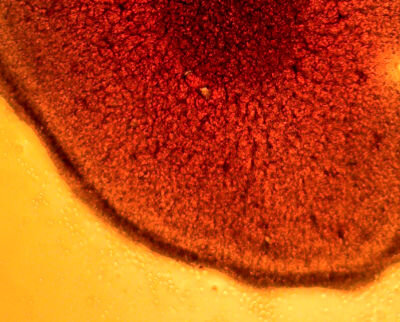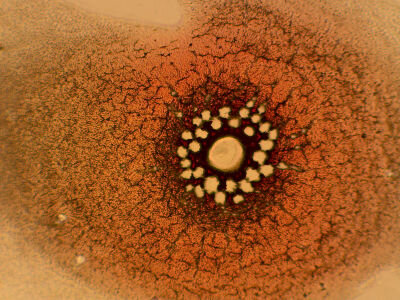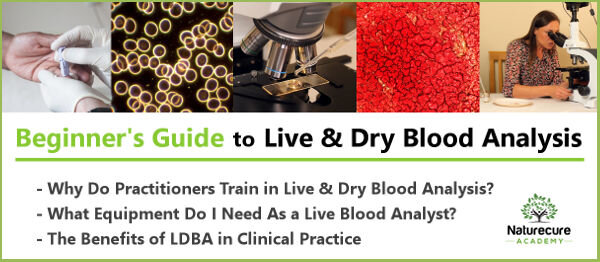Dried Blood Analysis – a Holistic-Medical Blood Test
Blood is the most complex human biological fluid. It contains a huge variety of molecules, ions and cells; we can tell a lot about our health from what is in our blood and the way it behaves.
As medical science has progressed it seems we have discovered even more that the blood can offer and this is why it is so frequently tested by medical professionals to monitor health.
Nutritionists, naturopaths, and functional medical practitioners often use a variety of blood tests too, in order to assess various nutrient levels, inflammatory markers or liver enzymes for example. Rather than to prescribe medicine or diagnose disease the results of these tests are used to generate protocols that focus on supplements as well as dietary advice.
By relying on these types of tests, however, there is a danger that the therapist loses the holistic perspective and instead uses an allopathic approach to health - there can be a temptation to prescribe individual supplements to try to address specific test results directly.
There is a blood test that began as a medical application but has developed as a fantastic holistic health assessment tool. It has a wealth of science and research behind it which validates its use in the context of health screening and it can be used as part of a holistic health approach by the complementary therapist.
That test is called Dry Blood Analysis (sometimes known as the Oxidative Stress Test).
Medical and Scientific History of
Dry Blood Analysis (DBA)
Originally DBA was developed as a simple, quick health assessment of very sick patients that could be performed at the bedside. It was a solution to the difficulty of extracting enough blood from very sick patients in order to run tests. It was developed in 1939 by a New York Doctor called Emanuel Goldberger and he called it a blood film diagnostic test.
It involved puncturing the patient’s fingertip and allowing a bead of blood to surface. A microscope glass slide was then pressed onto the finger in order to take up the blood. This was repeated three times resulting in three circular ‘puddles’ of blood on the slide. The slide was then left for 20 minutes, allowing the blood sample to dry.
Once dry the blood films produce distinct patterns depending on the contents and the condition of the patients’ blood. Diseases left distinct patterns in these dry blood films and could indicate how serious the state of health in the patient was. By holding the slide up to the light the doctor was then able to evaluate the patterns with the naked eye.
This test was further developed in 1942 by Dr Bolen and was used as a screening tool for cancer. The cancer disease process creates a large amount of oxidative stress/free radical damage from the breakdown of tissue which produced specific patterns in the dry blood films. In reality, however, the test was not as specific as this; it could detect the presence of any chronic disease - not just cancer - that would cause the oxidation and breakdown of tissue, including all inflammatory processes.
In 1979 the Bradford Research Institute determined what was causing the distinctive patterns that appeared in the dry blood layers. They proposed a theory – The Reactive Oxygen Toxic Species (ROTS) theory of degenerative disease - which mapped the blood’s highly complex clotting cascade and determined how various chronic and acute disease processes interrupted this delicate homeostasis.
They proved that the metabolic by-products of disease processes (ROTS) would damage cells, tissues and organs and that this damage to health could be assessed via the ‘HLB’ test – a name derived from the initials of the researchers.
The test was essentially revealing the levels of inflammation in the body that was caused by free radical damage.
Current Scientific Research on Dry Blood Analysis
There is ongoing scientific research into biological fluids by research institutions continually mapping the diagnostic markers available from a single drop of blood. They have been able to confirm that the presence of certain disease processes do indeed generate specific characteristic patterns within dried drop of blood.
Researchers from the department of Chemical Engineering in Monash University, Australia have been studying the cracking patterns that appear in a drop of dried blood. Their method of blood sampling and drying is slightly different but the theory as to why and how certain patterns appear is similar.
The Russian Scientific Research Institute of Gerontology in Moscow has also been developing a dry blood analysis test which they call “cuneform dehydration of biological fluids”. They believe that the body’s biological fluids are just as indicative of morphological changes in the body as the body’s cells and yet medical research has really only been focussing on cellular abnormalities.
The Dry Blood Analysis Test
- The Holistic Approach
As a Live & Dry Blood Analyst this new research is exciting and can offer theoretical and scientific weight behind our method of health screening, despite the differences between our testing processes.
Our testing method is similar to the Goldberger, Bolen and HLB method except we take eight blood films, or layers, per sample rather than three, we look at the dry blood under the microscope to view it in more detail and of course we are not conducting our test in controlled laboratory conditions but rather in our own clinic.
The core of our approach to Dry Blood Analysis is based on -
The ROTS theory of disease which states that free radical damage, oxidative stress and inflammation are the cause and by-product of all disease processes.
The understanding that ROTS by-products circulate in the blood and affect the clotting cascade.
The fluid dynamics of a drying drop of biological fluid – the blood.
The distinctive patterns that are generated by various disease states.
The effect that the presence of various toxic elements that circulate within the blood can have on the dry blood patterns
The Dry Blood Analysis procedure involves puncturing a client’s fingertip and allowing a bead of blood to form. This is left on the finger for 30 seconds to allow the clotting cascade to develop. A microscope slide is then pressed onto the drop of blood eight times. The slide is left to dry, which takes about 15 minutes, and in that time the eight blood layers will go through an extraordinary transformation.
Dry Blood Analysis Sample
As blood is a biological fluid - it behaves like a non-Newtonian fluid. This means that as the water evaporates from layers of blood it generates currents within the fluid. This moves the contents of the layer around and creates the distinctive patterns.
How the contents move and where they end up within the layer is determined by the electro-biochemical properties of the red blood cells, the quantity of the various clotting factors in the plasma, toxins that have been circulating within the blood, by-products of pathogens, by-products of oxidation, free radical damage and degenerative disease processes. This is what generates the distinctive patterns within the dry blood layers that are indicative of various issues going on within the body.
Blood Drop Evaporation
Dry Blood Analysis can:
Detect the presence of inflammation
Assess the progression of inflammatory processes - chronic or acute
Determine the location of the inflammatory process – organ, tissue or system specific
Monitor the progression or reduction of the inflammatory process
Detect heavy metal toxicity
Reveal the presence of parasites
Show mineral and vitamin imbalances
Show antibiotic damage
Detect bowel inflammation
Assess the lymphatic burden
Assess protein metabolism
Learning Live & Dry Blood Analysis Together
– Our Approach -
At Naturecure Academy we teach Dry Blood Analysis alongside Live Blood Analysis enabling you to conduct a well-rounded blood assessment on your clients, in your own clinic.
Not only can Dry Blood Analysis offer immediate confirmation of many issues that may be at play within your client’s state of health – but you can also use Live Blood Analysis alongside it to expand your understanding of your client’s health picture. The two work extremely well together……
Example
You may suspect a client has a heavy metal issue because they have several amalgam fillings or they have had them removed recently. Heavy metals can disrupt biological processes, encourage bacterial and parasitic infection, settle in neurological tissue etc.
You would not want to start forcing the body’s tissues to release heavy metals, however, if the kidneys, the liver, the blood brain barrier or the bowel could not handle it.
Dry Blood Analysis can confirm the presence of heavy metals and indicate whether there is evidence of parasites as well.
Live Blood Analysis can reveal liver, kidney or digestive stress. It can also reveal nutrient deficiencies that may hamper the body’s ability to detox.
________________________________
Our clients’ Live & Dry blood patterns, indications and findings are unique - by being able to understand and verify these findings we can create bespoke protocols that get to the root cause of their issues effectively.
Taking this approach can also mean less cost for your clients, as they can avoid paying for further laboratory testing if it is not necessary. This can add extraordinary value to what you can offer as a practitioner and set you apart from your competitors.
If you would like to know more about Live and Dry Blood Analysis Training so that you can use it to assess your clients’ health then please follow this link.
You are also invited to join our Facebook Group ‘Learning Live Blood Analysis’ - a private group of students, qualified analysts and anyone interested in learning.
If you have any questions about this topic or LDBA in general please email Shirah directly at info@naturecureacademy.com or add a comment below!








